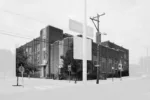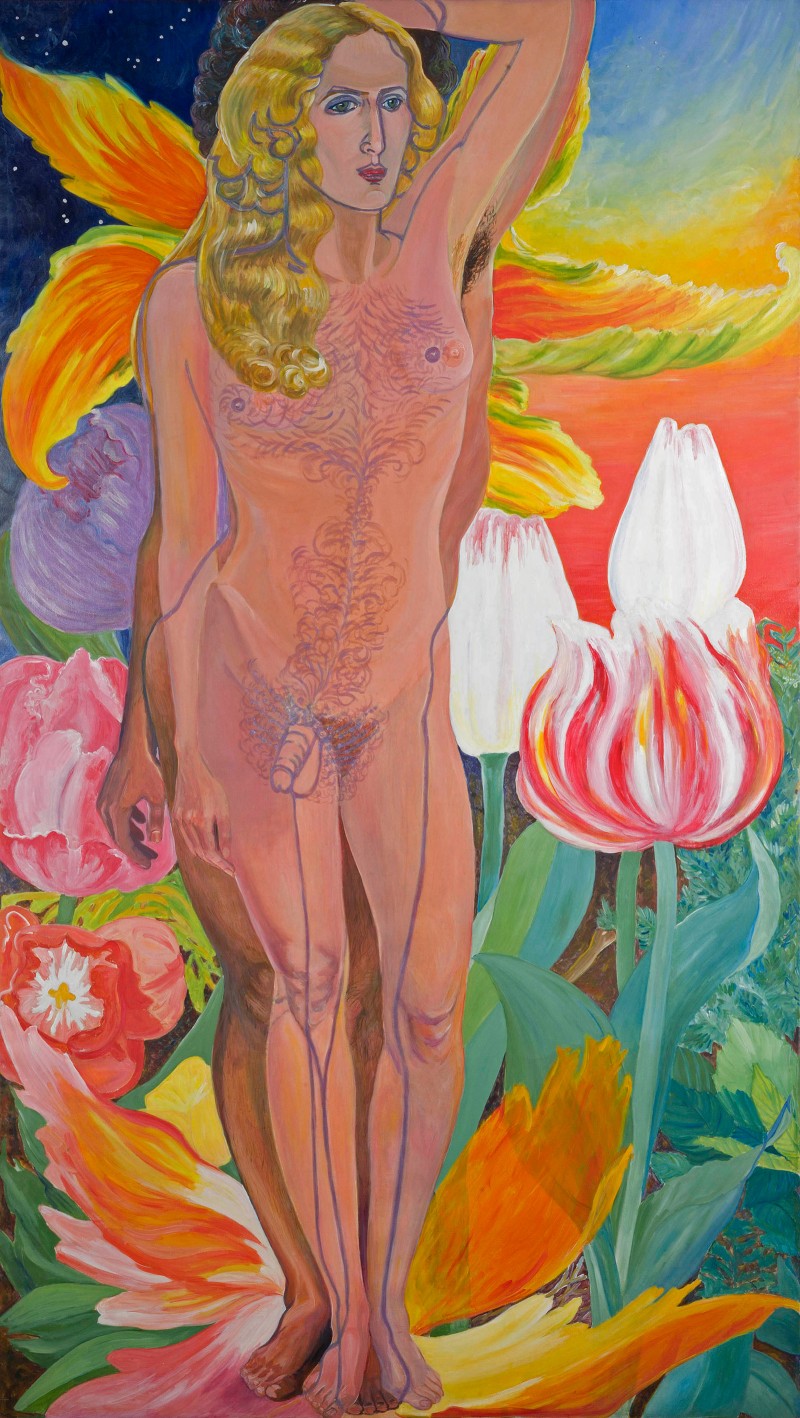
January 15, 1978
Thirty-eight years ago, on Sunday, January 15, 1978, a blizzard hit New York City. It was the day of Super Bowl XII, which was played in Louisiana. It was the day upon which a serial killer named Theodore Bundy brutally murdered two young women in a sorority house at Florida State University. Jimmy Carter was President of the United States. Ed Koch, a gay man who never publicly acknowledged his homosexuality, had just been elected Mayor of New York. Harvey Milk, a man who had come out, had just been elected to the Board of Supervisors of San Francisco. Later in 1978, Milk would be assassinated. Muhammad Ali was the Heavyweight Champion of the World; Elvis had died a few months earlier; historic peace talks were under way between Anwar Sadat and Menachem Begin.
For women, this was the era of Roe v. Wade, of the Equal Rights Amendment, of “Take Back the Night,” of a feminist art movement including the likes of Barbara Kruger, Lynda Benglis, Marina Abramovic, and Miriam Schapiro, and which culminated, in 1979, with Judy Chicago’s The Dinner Party.
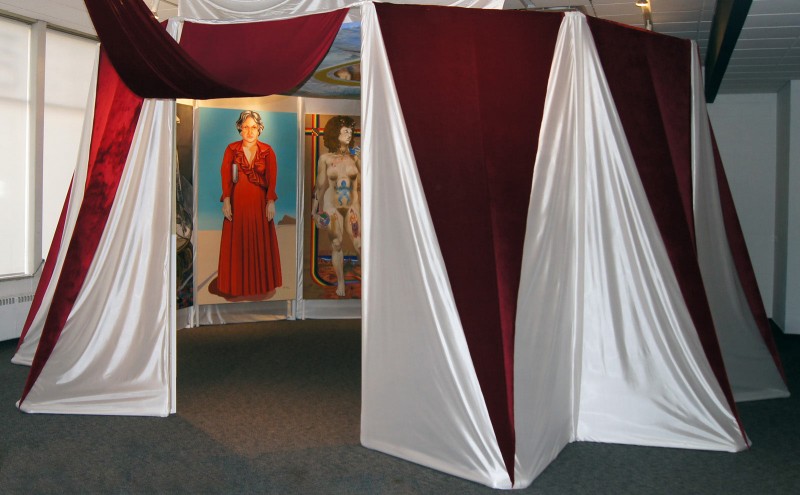
The Sister Chapel opens at P.S.1
On that Sunday in 1978, The Sister Chapel, a collaborative installation created by a dozen accomplished women artists, and which has now been resurrected at the Rowan University Art Gallery West, opened at P.S.1, in Long Island City, New York. The Sister Chapel consisted of 11 monumental canvases, each depicting the standing figure of a heroic woman. The paintings were arranged in a circle under an abstract ceiling by Ilise Greenstein, who had conceived of the project, in the spirit of feminist solidarity, to raise awareness of the accomplishments of women. Greenstein’s ceiling features a mirrored apex, a reminder that there is no limit to women’s potential. Almost 200 years earlier, Goethe had commented that: “Without having seen the Sistine Chapel, one can form no appreciable idea of what one man is capable of achieving.” In The Sister Chapel, the subject became what women were capable of achieving.
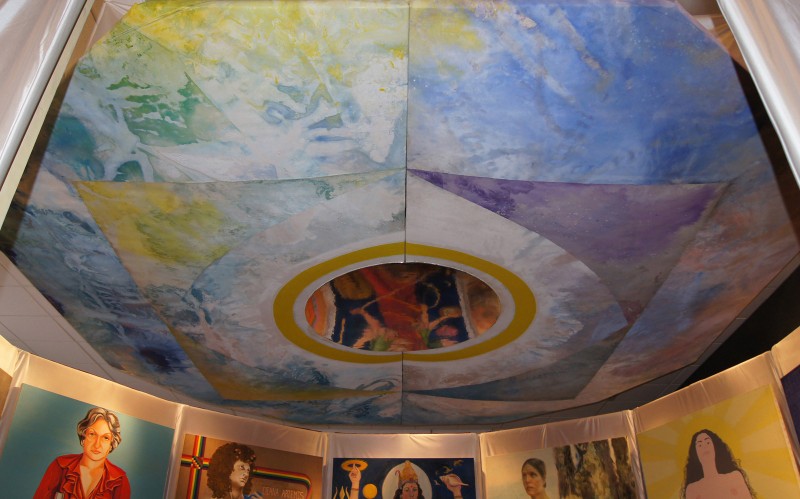
The heroes depicted in the installation, which were chosen by each artist, were contemporary and historical women, deities, and conceptual figures: Bella Abzug, Frida Kahlo, Marianne Moore, Betty Friedan, Joan of Arc, Artemisia Gentileschi, God, Lilith, Durga, a Superwoman, and a Womanhero.
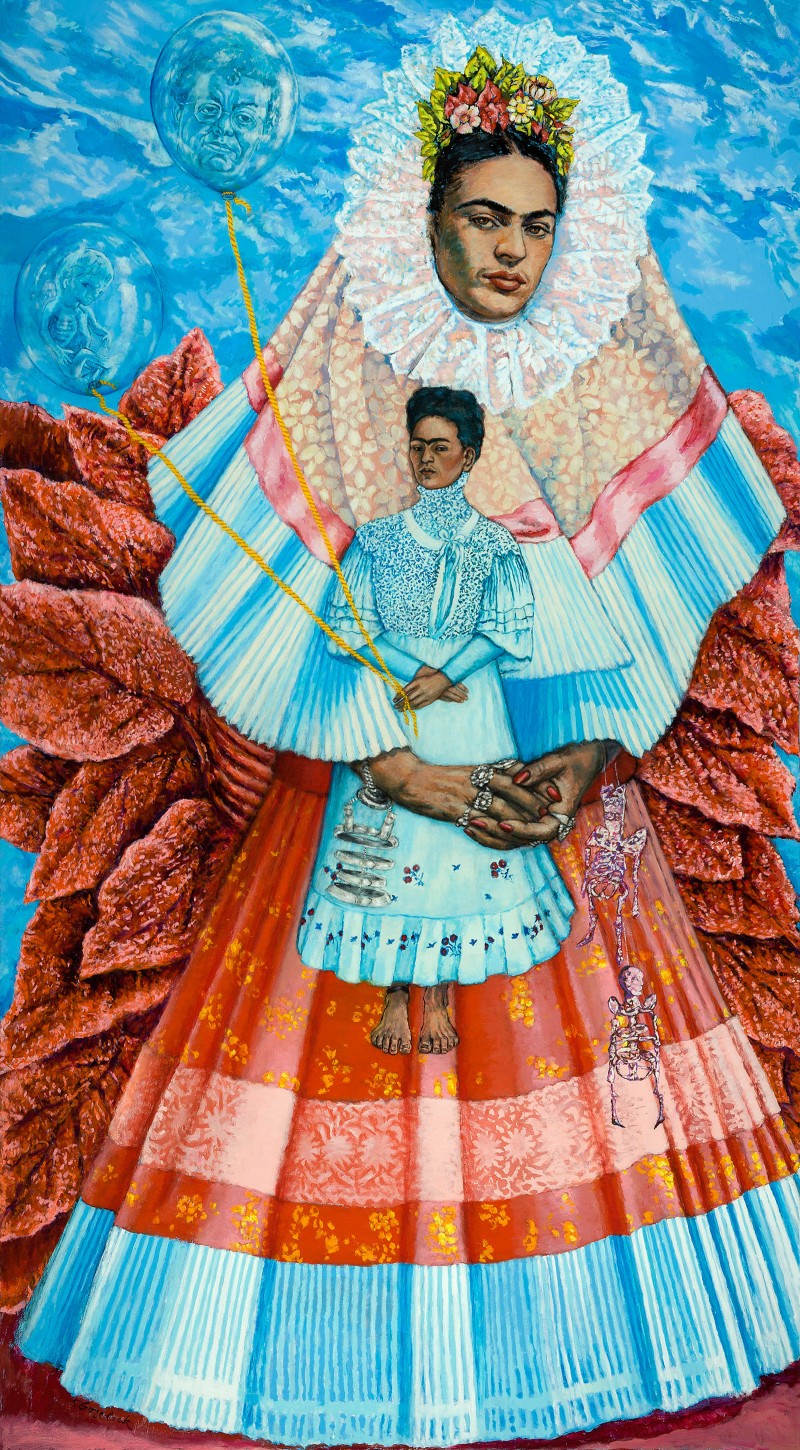
The participating artists were:
- Alice Neel (“Bella Abzug—the Candidate”) (an image of the painting is not available for reproduction here)
- Shirley Gorelick (“Frida Kahlo”)
- Betty Holliday (“Marianne Moore”) (an image of the painting is not available for reproduction here);
- June Blum (“Betty Friedan as the Prophet”)
- Martha Edelheit (“Womanhero”)
- Diana Kurz (“Durga”)
- Elsa M. Goldsmith (“Joan of Arc”)
- Cynthia Mailman (“God”)
- May Stevens (“Artemisia Gentileschi”) (an image of the painting is not available for reproduction here)
- Sharon Wybrants (“Self-Portrait as Superwoman (Woman as Culture Hero)
- Sylvia Sleigh (“Lilith”)
Maureen Connor designed a fabric pavilion for the installation, which was not completed for the original exhibition, but which at last has been fabricated for the show at Rowan. Sharon Wybrants, whose painting “Self-Portrait as Superwoman (Woman as Culture Hero)” was lost during the intervening decades, repainted the work for the exhibition.
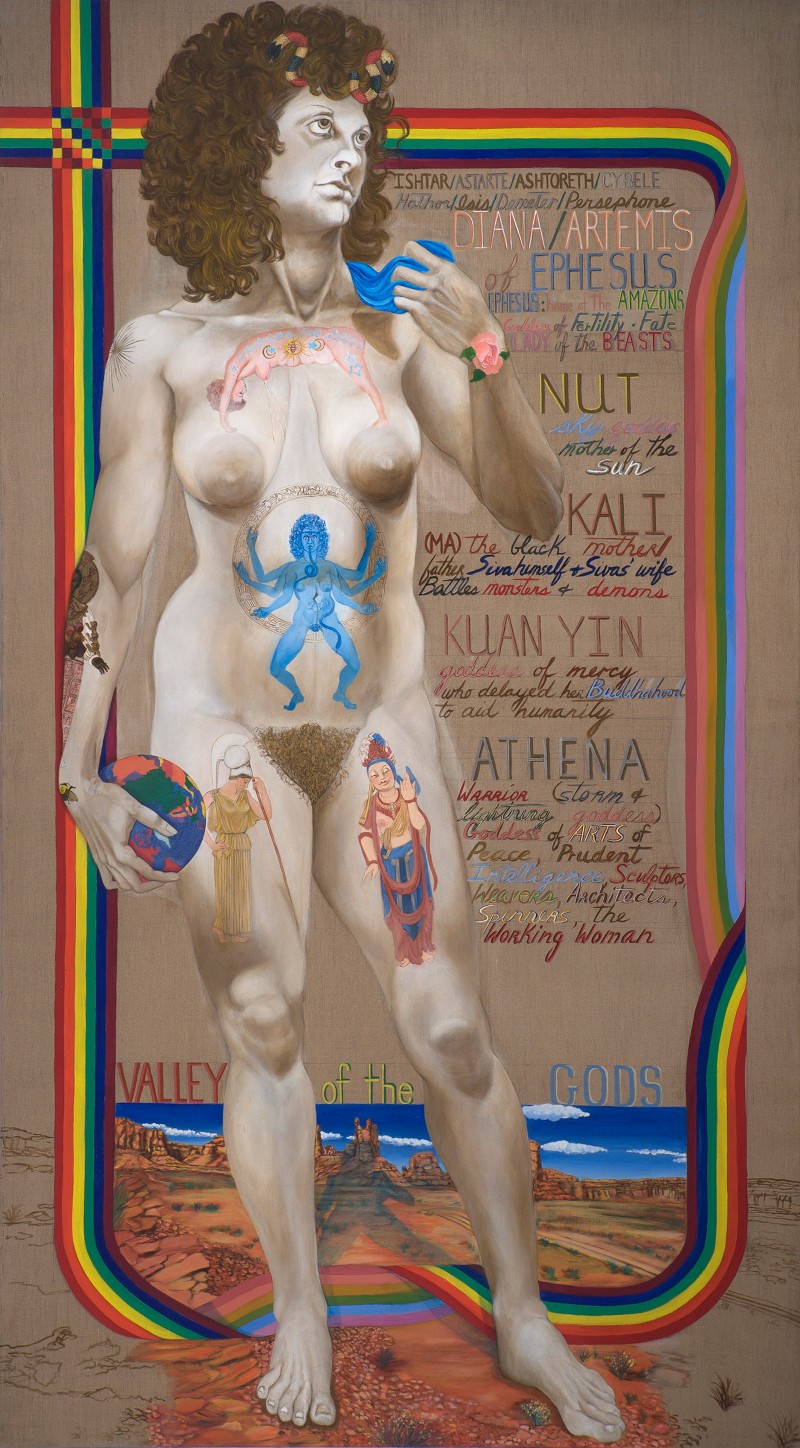
The resurrection of The Sister Chapel
The Sister Chapel was exhibited four times between 1978 and 1980. The installation was then decommissioned until its current reconstruction at Rowan by Rowan art historian Andrew D. Hottle. Hottle has spent the last decade researching the project, and in 2014 he published The Art of The Sister Chapel: Exemplary Women, Visionary Creators, and Feminist Collaboration (Farnham, England: Ashgate Publishing Ltd.), in which he documents the birth and development of the project, analyzes its components, and discusses the corpus of the work of each of the artists.
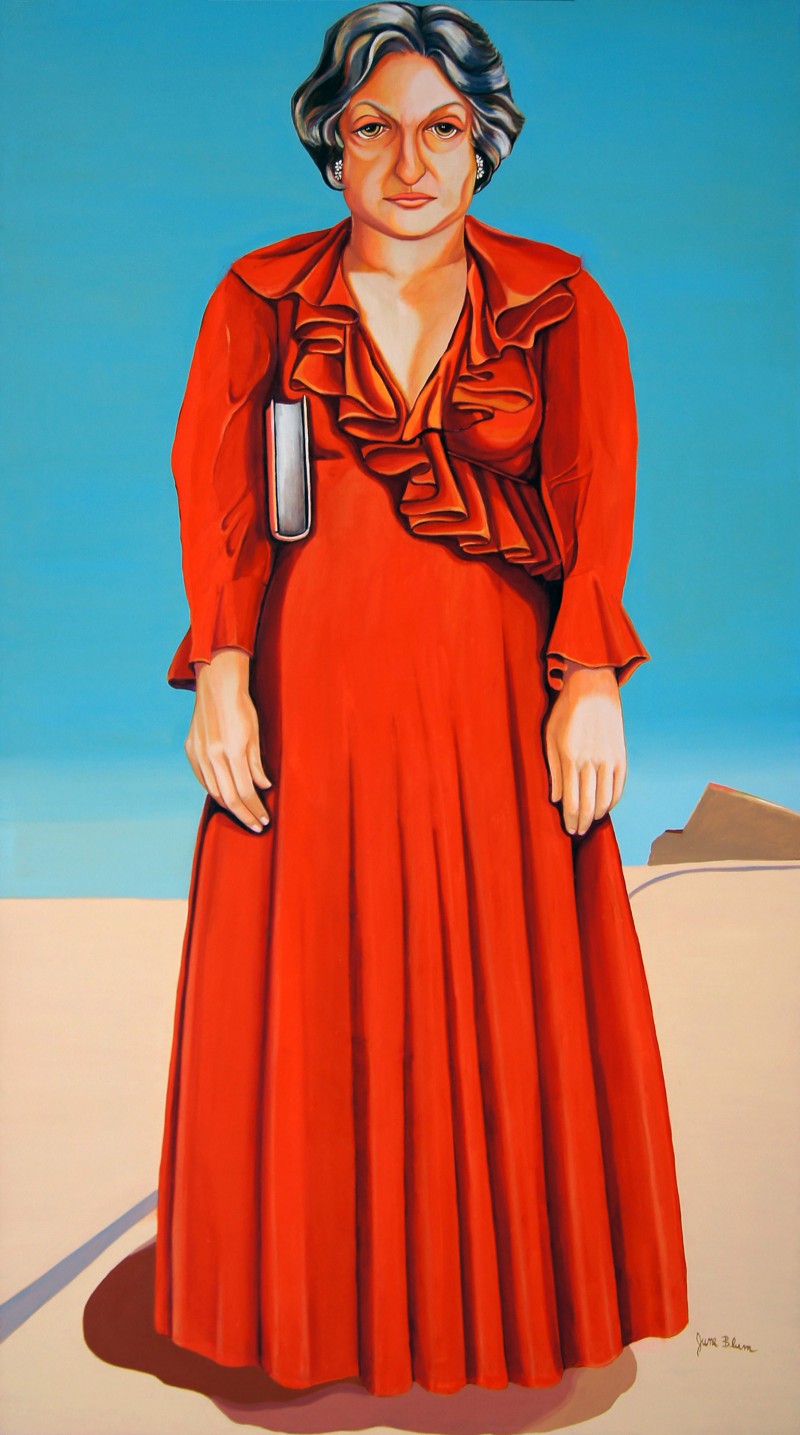
At the opening of the exhibition at Rowan on March 31, Dr. Hottle moderated a panel discussion which included six of the seven still living artists who contributed to The Sister Chapel: Kurz, Mailman, Wybrants, Edelheit, Connor, and Blum. It was an historic reunion, and it was fantastic to gain their perspectives on the project.
A few highlights: Martha Edelheit sardonically reflected upon “taking on Michaelangelo,” turning his “David” into her “Womanhero.” Sharon Wybrant (“Self-Portrait as Superwoman”) remarked that in the era in which the project was completed, she received compliments for “painting like a man”. Cynthia Mailman, who painted “God,” spoke of her difficulty choosing a hero because her hero was fellow participant Sylvia Sleigh. Diana Kurz, who depicted the Hindu goddess Durga, noted her interest in a female goddess who was more powerful than her male counterparts. June Blum (who participated by telephone) chose Betty Friedan because Friedan’s Feminine Mystique changed so many women’s lives. As reflected in their work, all of these artists touched upon the enduring relevance of The Sister Chapel to empowering women and to celebrating women’s achievements.
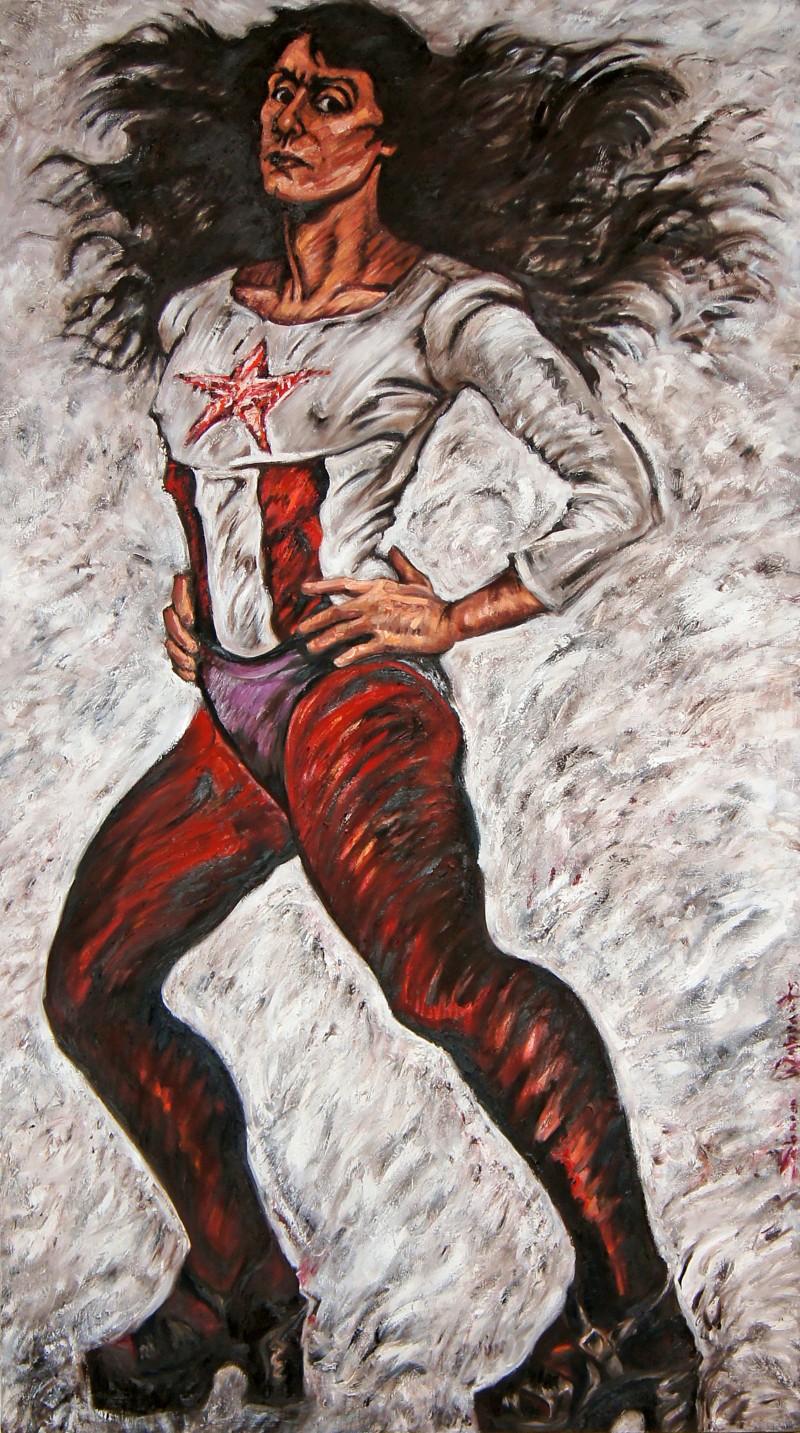
Characterized by boldness
A brief note about the paintings themselves. Notwithstanding the obvious mastery of the artists, notwithstanding the powerful themes and biographical subject matter explored, I think that the paintings share a single attribute which animates and adds coherence to the collection: they are bold. Even when they are humble or uncertain, they bespeak grandeur. The subjects are bold, and their boldness is matched in the visionary execution of each work. Take note of Sylvia Sleigh’s “Lilith,” Adam’s companion, who, according to one medieval text, was expelled from paradise after renouncing her subordinate role and insisting that she and her husband were equals. In Sleigh’s painting, male and female traits are superimposed upon the figure, which must have raised eyebrows in 1978. Overall, the paintings are filled with inspiring, iconic, independent, courageous, accomplished, and heroic female figures: warriors, activists, intellectuals, writers, artists.
The Sister Chapel became its own achievement by women about women, a chapter in the too-slowly evolving dismantlement of the patriarchy, and one which needs to be remembered. It is to Professor Hottle’s enormous credit and perseverance that the installation has been recovered and reconstructed at Rowan, where it may, with sufficient support, find a permanent home.
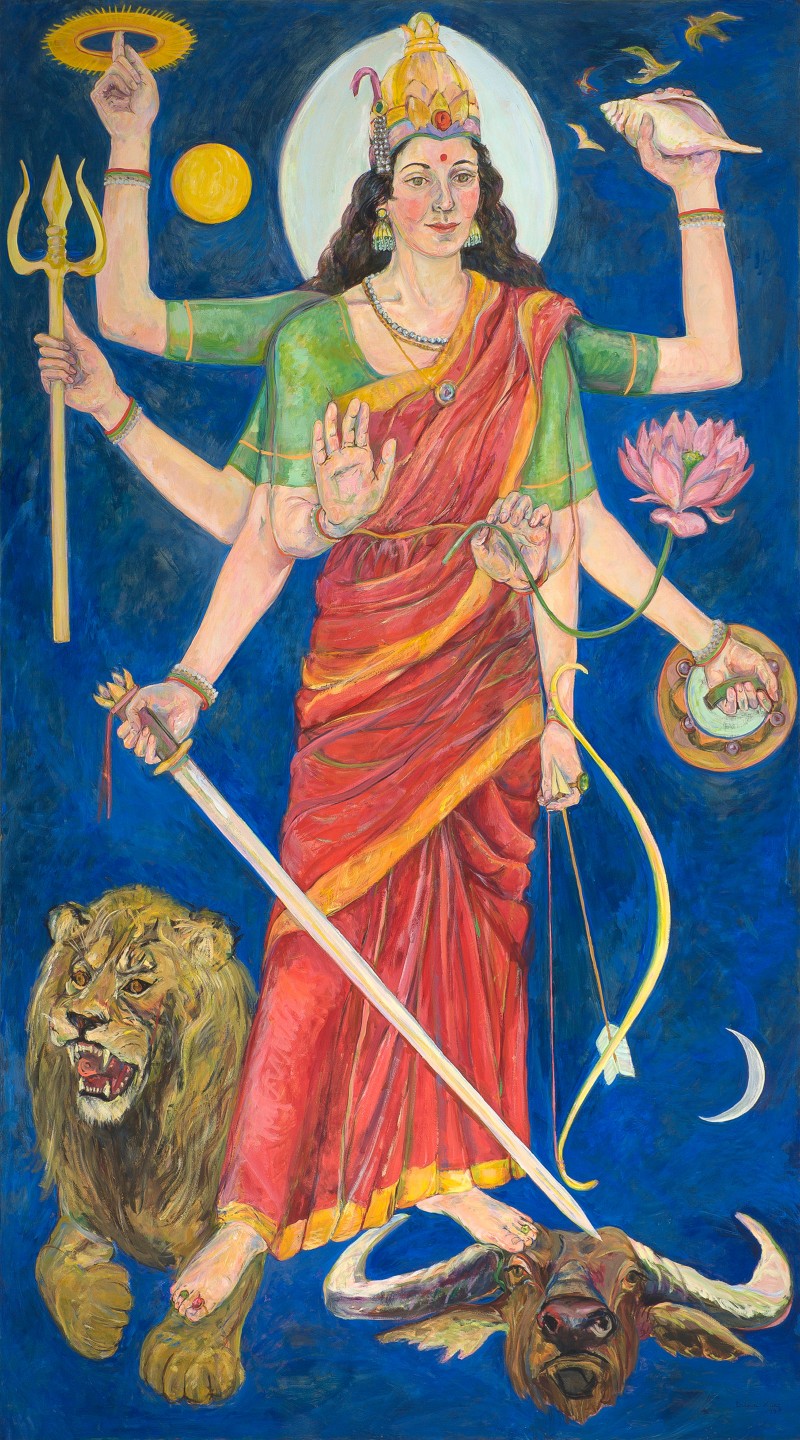
Endnotes
Two endnotes. First, a personal disclosure. My mother was a painter. Shirley Gorelick was one of her best and oldest friends—they attended Brooklyn College together—and Betty Holliday was her teacher. The richness of the work of these artists formed my artistic sensibilities, and I want to express my appreciation to them for that.
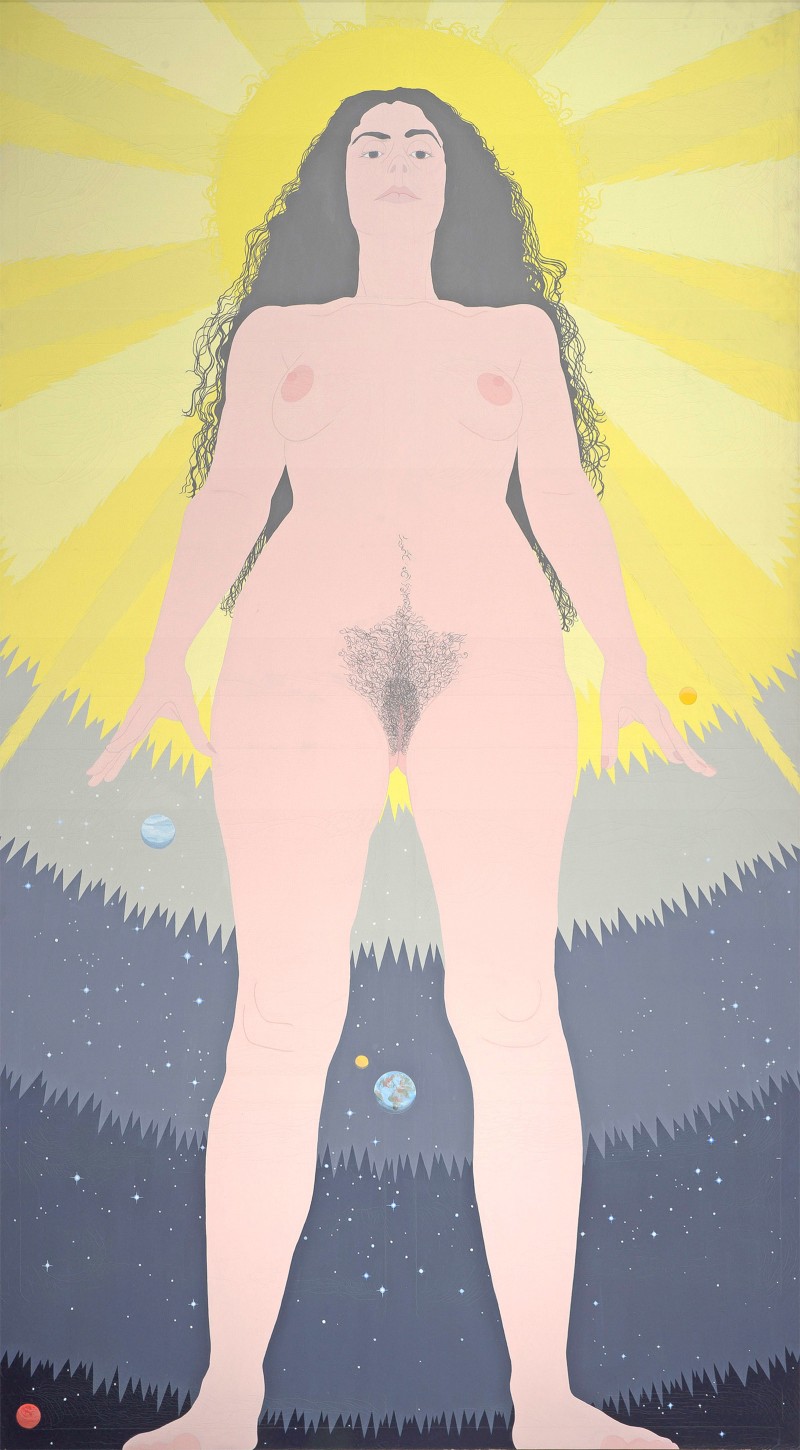
Although I hesitate to single out any of the remarkable artists who contributed to The Sister Chapel, because of my personal connection to Shirley Gorelick, I do want to point out one of the studies of Frida Kahlo that she drew for the project, which has been included in the Rowan exhibit, and which I thought was a staggering example of her talent. Shirley’s children and grandchildren have formed a foundation to preserve her work and to engage in art education and research, with a focus on women in the arts, and examples of her work can be seen on the foundation website.
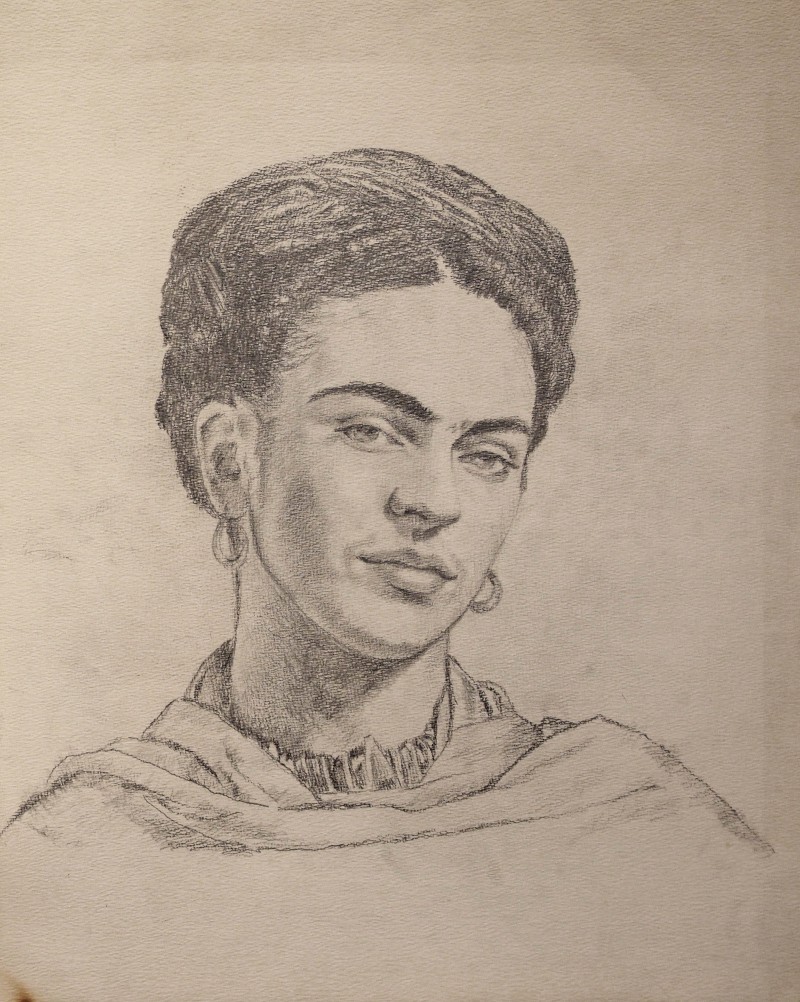
Finally, a poem by Marianne Moore that I have always loved, and which I think aptly reflects the sentiment that inspired The Sister Chapel, and perhaps the portrait of her painted by Betty Holliday for the exhibition.
I May, I Might, I Must
If you will tell me why the fen
appears impassable, I then
will tell you why I think that I
can get across it if I try.
–Marianne Moore
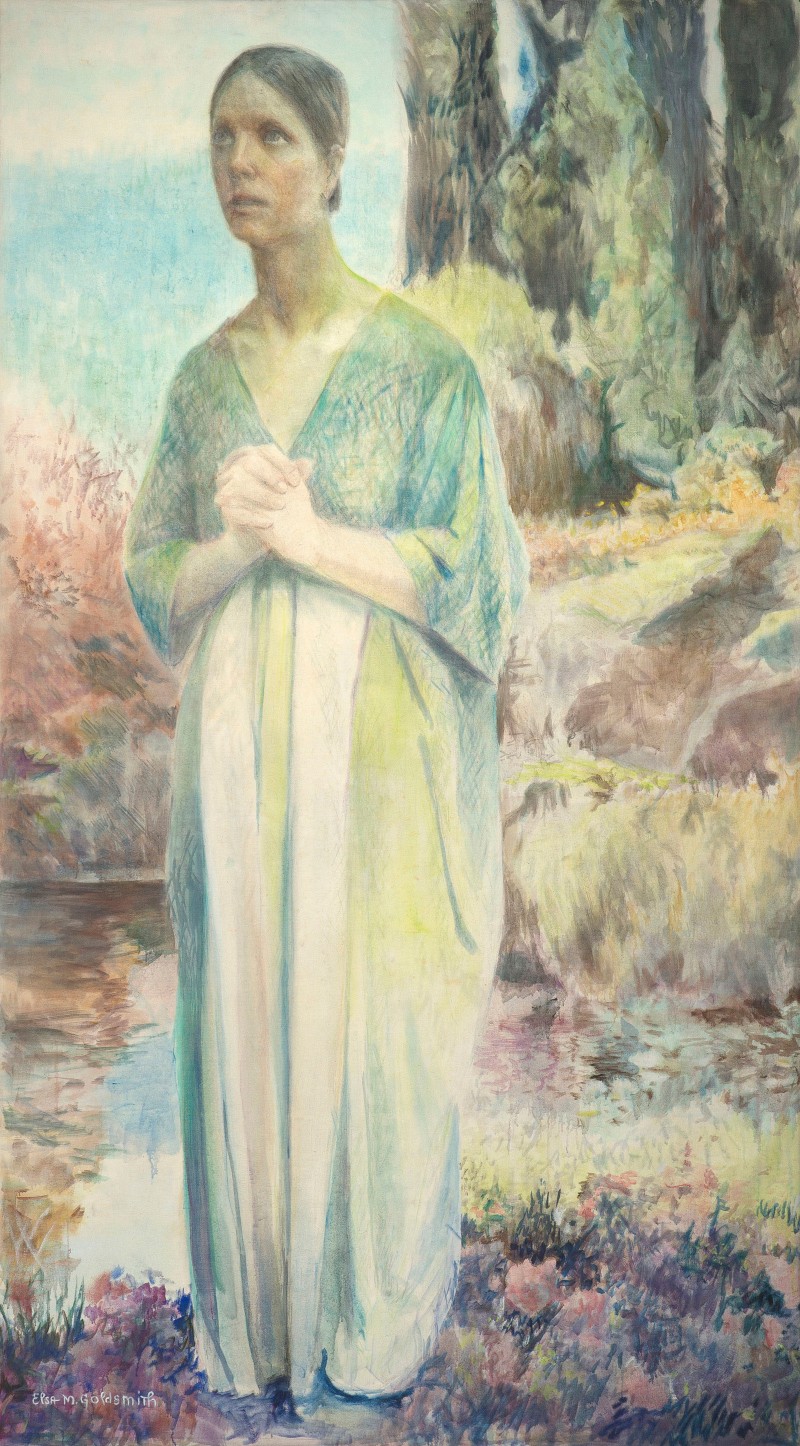
Much has already been written about this remarkable exhibition: “After 35 years, lost feminist art back on display,” by Samantha Melamed (philly.com, March 30, 2016); “God Is A Woman In Previously Forgotten Feminist Exhibit ‘The Sister Chapel’,” by Priscilla Frank (The Huffington Post, March 31, 2016); “Major Feminist Art Installation ‘The Sister Chapel’ Resurrected After 37 Years,” by Sarah Cascone (artnet news, March 26, 2016); “The Sister Chapel Returns,” by Robin Greenstein (Great Neck Record, March 24, 2016).
The Sister Chapel will be on display at the Rowan University Art Gallery West (Mary Salvante, Gallery and Exhibitions Program Director), 201 Mullica Hill Rd., Glassboro, NJ 08028, through June 30, 2016.




